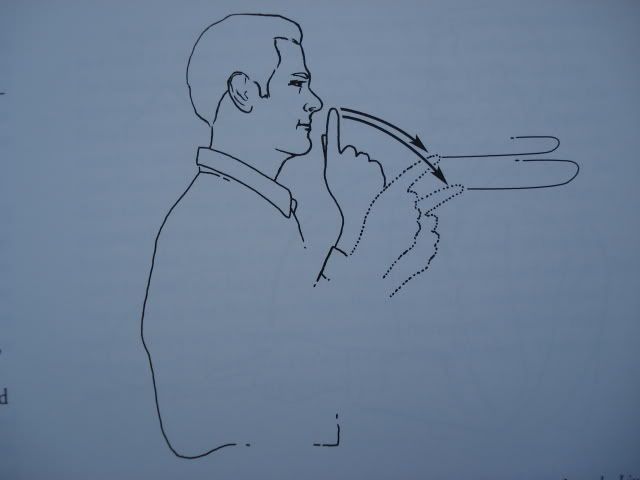I can do some photos this week. What I was trying to describe is a focus on the elbow being the main fulcrum of the casting stroke, with very little wrist action. I keep my thumb in line with the rod, wrist forward but the rod not totally in line with the forearm, rod hand just slightly inside the shoulder joint, elbow slightly forward. I have been trying to focus on having a definite firm end of my stroke forward and backward to allow the rod to fully load.
I am helping edit
The Perfect Cast I. In the book Gary Borger describes the 3 joints used in fly casting - the wrist, elbow, and shoulder.
I think very little wrist action is misleading. The wrist is critical to the fly cast. When a thumb on top grip is used, the fly rod is lined up with the thumb. When the wrist is laid back, the thumb can point as far down as 4 o'clock. So the wrist must not be laid back all the way BUT it still must move to allow for the wrist flick that occurs before the rod stop. Without the wrist flick, the rod tip does not move out of the way of the trailing fly line and a tailing loop will result.
Remember that at the rod stop, the bent rod straightens AND elongate. The rod tip will extend ABOVE the level of the trailing fly line, resulting in a tailing loop. So the rod tip must be dipped down, out of the way of the fly line. The wrist flick does this.
A problem can occurs on the back cast when the thumb on top grip allows the wrist to take the rod angle to the horizontal. So the wrist cannot be locked through out the cast but it must be controlled.
The FFF Master Casting Clinic Study Guide discusses this wrist flick which controls loop size.
“The wrist is better suited for quick, final movements than for those requiring sustained, evenly applied force. ------- Other instructors believe this wrist action is so important that they emphasize it in their teaching. Lefty and Joan Wulff cast with different styles, yet both have stated that they use large muscles to provide force and direction to throw the line, but a late, quick wrist movement to control the size of the casting loop. ------- Longtime East Coast instructor Bill Cairns has similarly described this wrist action. Doug Swisher has taught it as a "micro-wrist" movement and Joe Humphreys as a "tap". ------ On the forward cast, I want to build in wrist action as part of the stop. To do this, I need to channel a student?s wrist movement into a late time frame within the cast.”
Therefore, at the hard stop, there must be a very slight tip of the rod tip down so that the fly line can clear the rod tip. The degree of this slight flip controls the loops size.
The illustration below is from pg 31 of Jason Borger's
Nature of Fly Casting demonstrates that a small flip = a tight loop. "All else being equal, the more the rod tip is flipped away from the the Line Plane (Phase Two), the larger the line loop will be.
The use of a paint brush is a good way to learn this wrist flick or micro wrist. You want to stand in front of a wall and stop and flip so the water lands on the wall at about eye level. See this post:
http://www.theflyfishingforum.com/forums/fly-cast/374464-paint-brush-fly-casting.html
A lot of practice is required to manage all the variables so a tight loop results.
So practice a smooth casting stroke. Start with short casts and adjust your stroke to get a tight loop and then gradually lengthen the cast and your stroke.

